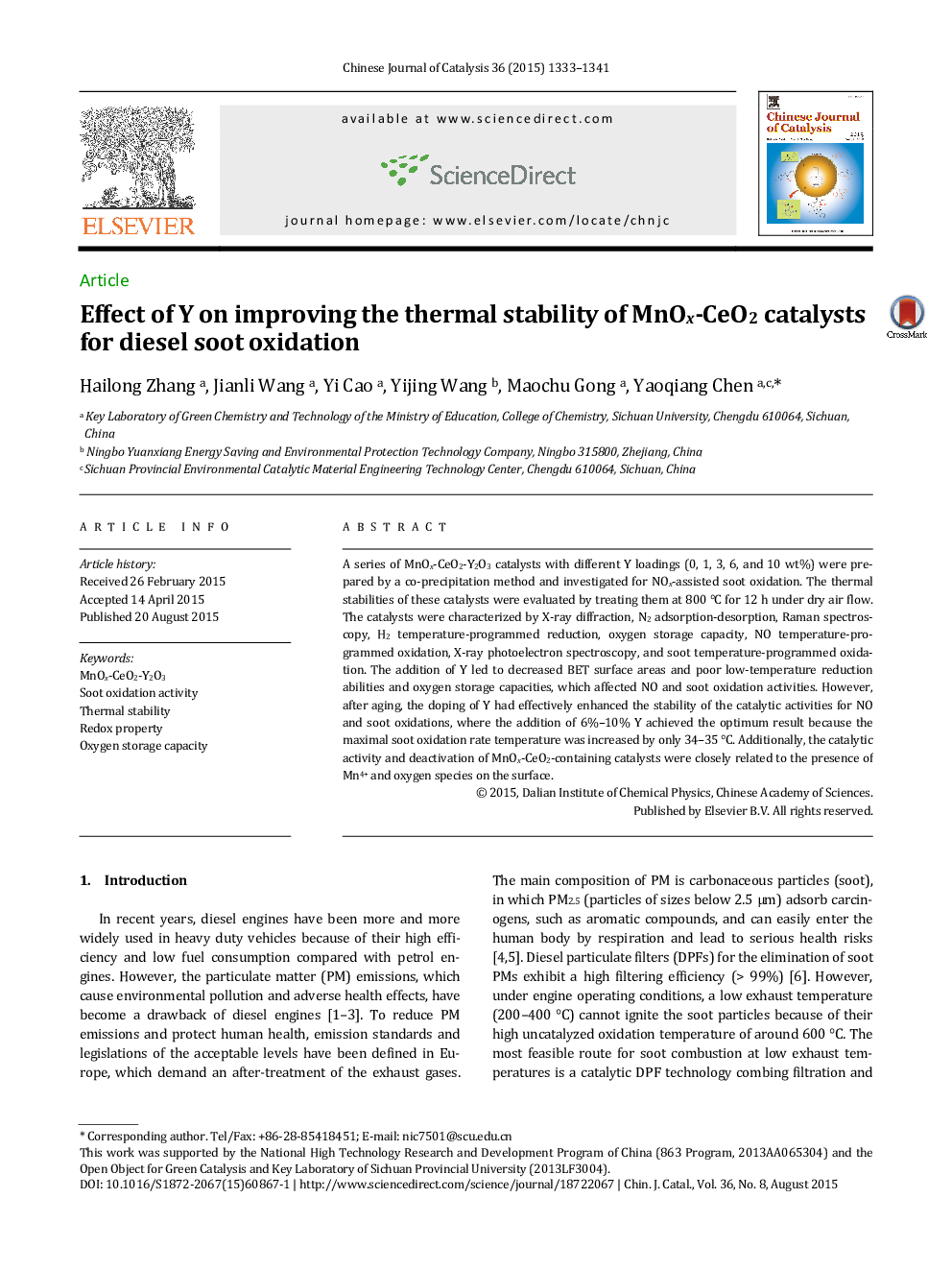| Article ID | Journal | Published Year | Pages | File Type |
|---|---|---|---|---|
| 59493 | Chinese Journal of Catalysis | 2015 | 9 Pages |
A series of MnOx-CeO2-Y2O3 catalysts with different Y loadings (0, 1, 3, 6, and 10 wt%) were prepared by a co-precipitation method and investigated for NOx-assisted soot oxidation. The thermal stabilities of these catalysts were evaluated by treating them at 800 °C for 12 h under dry air flow. The catalysts were characterized by X-ray diffraction, N2 adsorption-desorption, Raman spectroscopy, H2 temperature-programmed reduction, oxygen storage capacity, NO temperature-programmed oxidation, X-ray photoelectron spectroscopy, and soot temperature-programmed oxidation. The addition of Y led to decreased BET surface areas and poor low-temperature reduction abilities and oxygen storage capacities, which affected NO and soot oxidation activities. However, after aging, the doping of Y had effectively enhanced the stability of the catalytic activities for NO and soot oxidations, where the addition of 6%–10% Y achieved the optimum result because the maximal soot oxidation rate temperature was increased by only 34–35 °C. Additionally, the catalytic activity and deactivation of MnOx-CeO2-containing catalysts were closely related to the presence of Mn4+ and oxygen species on the surface.
Graphical AbstractAddition of Y to MnOx-CeO2 improves thermal stability of the catalytic activity for soot oxidation, and 6%–10% Y exhibits the optimal best result. The activity and thermal deactivation of the catalysts are closely related to the presence of Mn4+ species.Figure optionsDownload full-size imageDownload as PowerPoint slide
